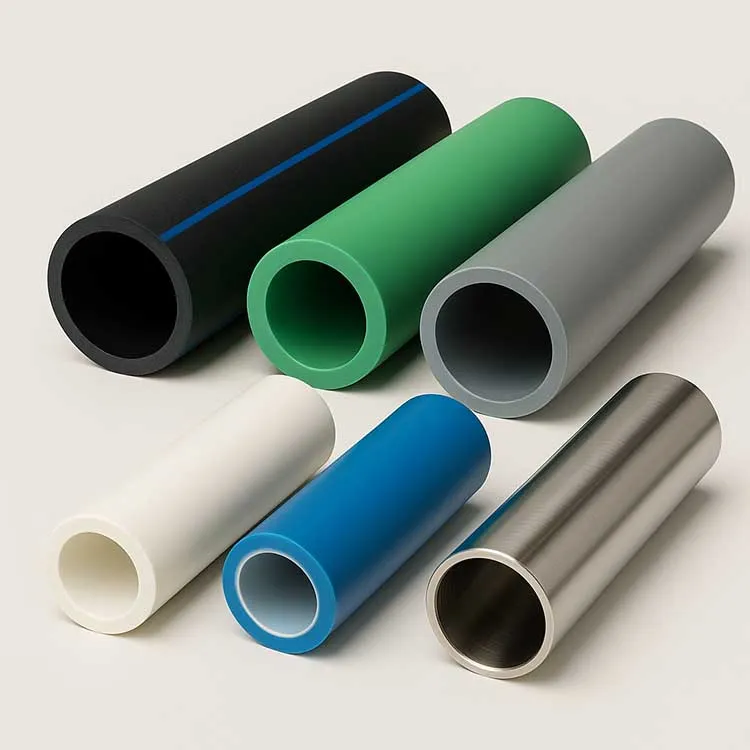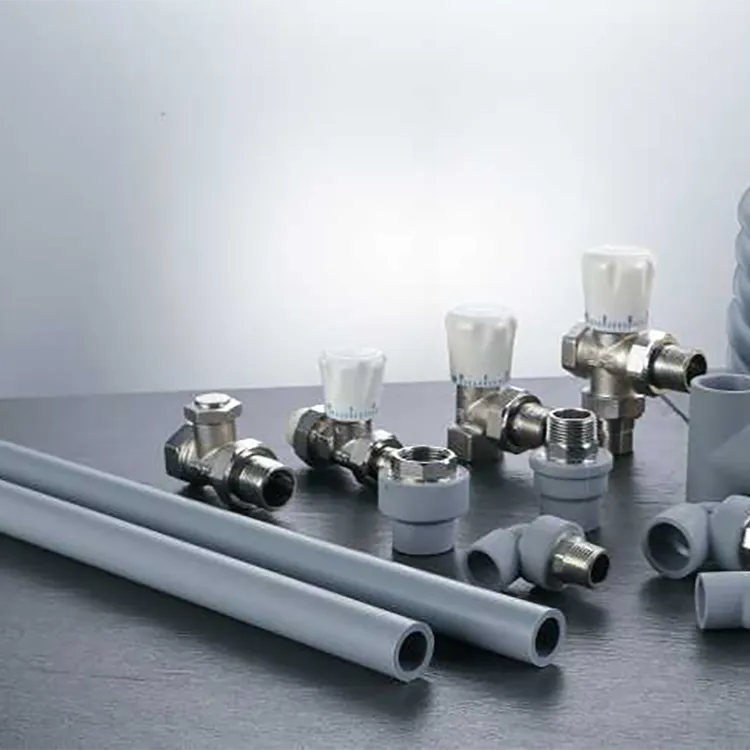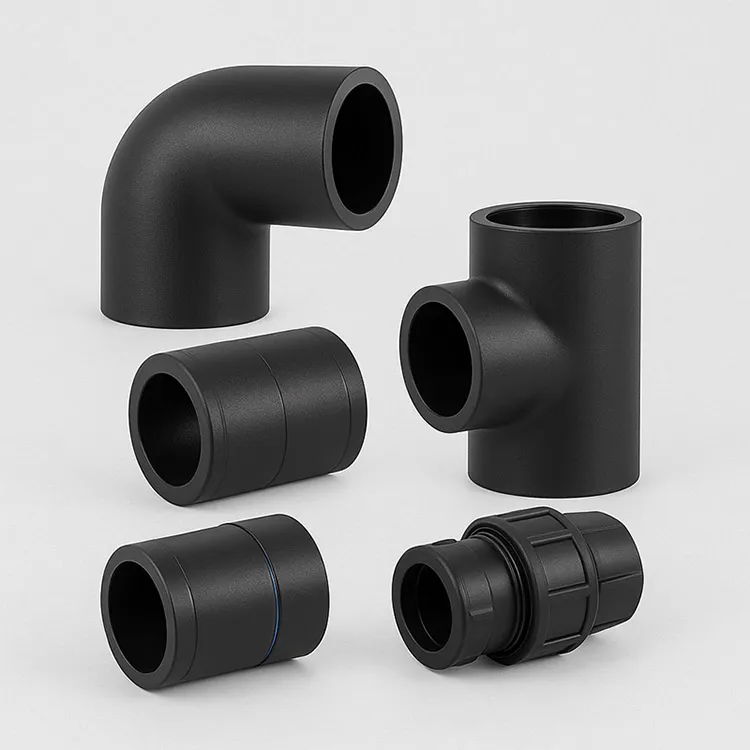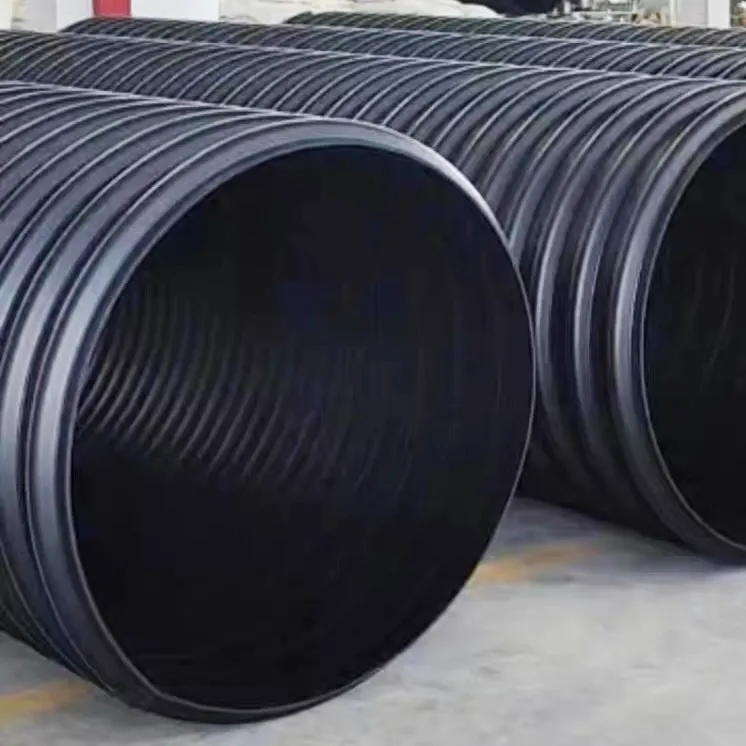The aquaculture industry is experiencing rapid growth worldwide as an essential source of seafood and a vital contributor to global food security. Behind the scenes of successful aquaculture operations lies a complex network of infrastructure, including pipelines that play a crucial role in ensuring water supply, waste management, and overall system efficiency. Among the materials utilized for these pipelines, High-Density Polyethylene (HDPE) pipes have emerged as versatile and reliable components that contribute to the sustainable development of aquaculture systems.
Aquaculture applications of 1 Inch to 12 Inches HDPE pipes
High-Density Polyethylene (HDPE) pipes ranging from 1 inch to 12 inches in diameter have found a wide range of applications within the aquaculture industry. These versatile pipes play a crucial role in ensuring the efficient and sustainable operation of aquaculture systems. Here are some key aquaculture applications of 1 inch to 12 inches HDPE pipes:
1. Water Supply and Distribution
HDPE pipes are used to transport and distribute freshwater throughout aquaculture facilities. They ensure a consistent and reliable water supply to ponds, tanks, and other production units, supporting the growth and health of aquatic organisms.
2. Oxygenation and Aeration
Proper oxygen levels are essential for the well-being of fish and other aquatic species. HDPE pipes are used to deliver oxygen-rich air or oxygen gas into water bodies, enhancing dissolved oxygen levels and promoting fish health and growth.
3. Waste Removal and Filtration
HDPE pipes play a vital role in removing waste, excess feed, and other particulates from aquaculture systems. They transport waste materials to filtration and treatment units, helping to maintain water quality and prevent pollution.
4. Circulation and Flow Control
Efficient water circulation is crucial for maintaining uniform conditions and preventing stagnation. HDPE pipes are employed to control the flow of water within aquaculture systems, ensuring even distribution of nutrients, oxygen, and temperature.
5. Temperature Regulation
n some aquaculture operations, temperature control is essential for optimal growth. HDPE pipes facilitate the movement of warm or cool water, helping to regulate water temperatures and create suitable environments for different species.
6. Biosecurity and Disease Management
HDPE pipes can be used to isolate and quarantine sections of aquaculture facilities. By controlling the flow of water, HDPE pipes contribute to biosecurity measures that help prevent the spread of diseases among aquatic populations.
7. NUTRIENT MANAGEMENT
Aquaponics systems, which combine aquaculture with hydroponics, utilize HDPE pipes to transport nutrient-rich water from fish tanks to plant beds. This symbiotic relationship supports plant growth while simultaneously purifying water for the aquatic animals.
8. Harvesting and Sorting
HDPE pipes can be incorporated into harvesting and sorting processes. They can transport harvested aquatic organisms for further processing, ensuring a smooth and efficient workflow.
9. Water Treatment and Disinfection
HDPE pipes are compatible with various water treatment methods, including UV sterilization, ozonation, and chlorination. They enable the efficient distribution of treated water to maintain water quality and hygiene.
10. Recirculating Aquaculture Systems (RAS)
RAS involve the continuous filtration and recirculation of water within closed-loop systems. HDPE pipes are integral to these setups, allowing for the movement of water between filtration units, fish tanks, and other components.
11. Research and Hatcheries
HDPE pipes are used in aquaculture research facilities and hatcheries for controlled water supply, waste removal, and water quality management during the early stages of aquatic life.
12. Seawater and Brackish Water Applications
HDPE pipes' resistance to corrosion makes them suitable for aquaculture operations in brackish water and marine environments, where saltwater can degrade traditional piping materials.
In conclusion, HDPE pipes ranging from 1 inch to 12 inches in diameter are essential components in modern aquaculture systems. Their durability, corrosion resistance, flexibility, and ease of installation make them invaluable for water supply, waste management, temperature control, and various other critical functions that contribute to the success of aquaculture operations while promoting sustainability and environmental stewardship.
How HDPE pipe ensures water supply in aquaculture?
High-Density Polyethylene (HDPE) pipes play a critical role in ensuring a reliable and consistent water supply within aquaculture systems. These pipes are designed and used in various ways to facilitate water delivery and distribution for the well-being and growth of aquatic organisms. Among them, in aquaculture, the most commonly used is 1 inch~12 inches HDPE pipe. Here's how HDPE pipes ensure water supply in aquaculture:
1. Water Intake and Source Connection
HDPE pipes are often used to connect the aquaculture facility to a water source, such as a natural water body (river, lake) or a well. They provide a conduit for drawing water into the system for various purposes.
2. Water Distribution to Ponds and Tanks
HDPE pipes transport water from the source to different ponds, tanks, or raceways within the aquaculture facility. The pipes distribute water evenly, ensuring that all production units receive the required water volume.
3. Oxygenation and Aeration
HDPE pipes are employed to deliver oxygen-rich air or oxygen gas to the water. Aeration systems enhance the dissolved oxygen levels in the aquatic environment, promoting fish health and growth.
4. Recirculation Systems
In recirculating aquaculture systems (RAS), HDPE pipes facilitate the continuous recirculation of water between filtration units, biofilters, and fish tanks. This closed-loop approach conserves water and maintains optimal water quality.
5. Waste Removal and Filtration
HDPE pipes transport waste, uneaten feed, and other byproducts away from production units to filtration and waste management systems. This process helps maintain water quality by preventing the buildup of pollutants.
6. Temperature Regulation
HDPE pipes enable the controlled transfer of warm or cool water to maintain suitable water temperatures for specific aquatic species. This is particularly important in hatcheries and facilities where temperature-sensitive species are reared.
7. Biosecurity Measures
HDPE pipes are used to isolate or quarantine sections of the aquaculture facility. By controlling water flow, they prevent the spread of diseases between different production areas.
8. Nutrient Transport in Aquaponics
In aquaponics systems, HDPE pipes transport nutrient-rich water from fish tanks to plant beds. This symbiotic relationship supports plant growth while purifying water for the aquatic organisms.
9. Water Treatment and Disinfection
HDPE pipes distribute treated water from disinfection systems to ensure water quality and prevent disease outbreaks.
10. Harvesting and Sorting
HDPE pipes may be utilized in the transportation of harvested aquatic organisms from production units to processing areas.
11. Research and Hatcheries
HDPE pipes are used in research facilities and hatcheries to provide controlled water supply, waste removal, and optimal conditions for early-stage aquatic life.
HDPE pipes ensure water supply in aquaculture by providing a reliable, efficient, and versatile conduit for water movement within the facility. Their corrosion resistance, durability, flexibility, and smooth interior surface contribute to maintaining water quality, minimizing disruptions, and supporting the overall health and growth of aquatic species. Proper design, installation, and maintenance of HDPE pipe systems are essential to ensure the continued success of aquaculture operations.
How HDPE pipe can ensure sewage treatment in aquaculture?
High-Density Polyethylene (HDPE) pipes can play a vital role in ensuring effective sewage treatment within aquaculture systems. Proper sewage treatment is crucial for maintaining water quality, preventing environmental contamination, and ensuring the health and well-being of aquatic organisms. HDPE pipes contribute to sewage treatment in aquaculture in the following ways:
1. Waste Removal and Transport
HDPE pipes are used to transport sewage, waste, and effluent away from production units such as fish tanks, raceways, and ponds. This prevents the accumulation of organic matter, uneaten feed, and metabolic waste that can degrade water quality.
2. Distribution to Treatment Systems
HDPE pipes transport sewage to treatment systems such as settling tanks, biofilters, and sedimentation basins. These treatment units remove solids, suspended particles, and organic matter from the wastewater.
3. Aeration and Oxidation
HDPE pipes can be used to deliver air or oxygen to sewage treatment systems, enhancing biological processes that break down organic material through aerobic digestion. Aeration improves the efficiency of sewage treatment by promoting the growth of beneficial microorganisms.
4. Biofiltration
In recirculating aquaculture systems (RAS), HDPE pipes transport sewage to biofilters where nitrifying bacteria convert toxic ammonia and nitrite compounds into less harmful nitrate. This contributes to maintaining water quality and reducing the potential for ammonia toxicity.
5. Effluent Discharge
HDPE pipes facilitate the controlled discharge of treated effluent back into the environment or into irrigation systems. This ensures that the treated wastewater does not negatively impact surrounding water bodies or agricultural land.
6. UV Sterilization and Disinfection
HDPE pipes distribute wastewater through UV sterilization systems or disinfection units that use chemicals or other methods to eliminate pathogens and harmful microorganisms, improving water quality and reducing disease risks.
7. Monitoring and Sampling
HDPE pipes can be integrated with sensors and sampling points for monitoring water quality parameters within the sewage treatment process. This allows for real-time assessment and adjustments to the treatment process.
8. Efficiency and Sustainability
The smooth interior surface of HDPE pipes minimizes friction and reduces the potential for clogs, ensuring efficient sewage transport and treatment. Their durability and resistance to chemical degradation contribute to long-term, sustainable sewage treatment.
9. Segregation and Biosecurity
HDPE pipes can be utilized to segregate different waste streams, preventing cross-contamination and maintaining biosecurity within the aquaculture facility.
10. Preventing Environmental Contamination
Proper sewage treatment using HDPE pipes helps prevent the release of pollutants, nutrients, and disease agents into surrounding ecosystems, minimizing the ecological impact of aquaculture operations.
By effectively managing sewage treatment, HDPE pipes contribute to a clean and healthy aquatic environment, promote sustainable aquaculture practices, and ensure compliance with environmental regulations. Proper design, installation, and maintenance of HDPE pipe systems, along with integration into well-designed sewage treatment infrastructure, are essential to achieving successful sewage treatment in aquaculture systems.
In the intricate tapestry of aquaculture, the unassuming presence of 1-inch to 12 inches HDPE pipes weaves a narrative of growth, resilience, and innovation. As the aquaculture industry continues to evolve, these pipes stand as a testament to the essential role that reliable infrastructure plays in nurturing healthy aquatic ecosystems and meeting the demands of a growing global population. In the pursuit of sustainable seafood production, HDPE pipes prove that even the smallest conduits can have a monumental impact on the future of aquaculture.



981.webp)

 (1)379.webp)

294.webp)
476.webp)
420.webp)
146.webp)
460.webp)
287.webp)
274.webp)
688.webp)


